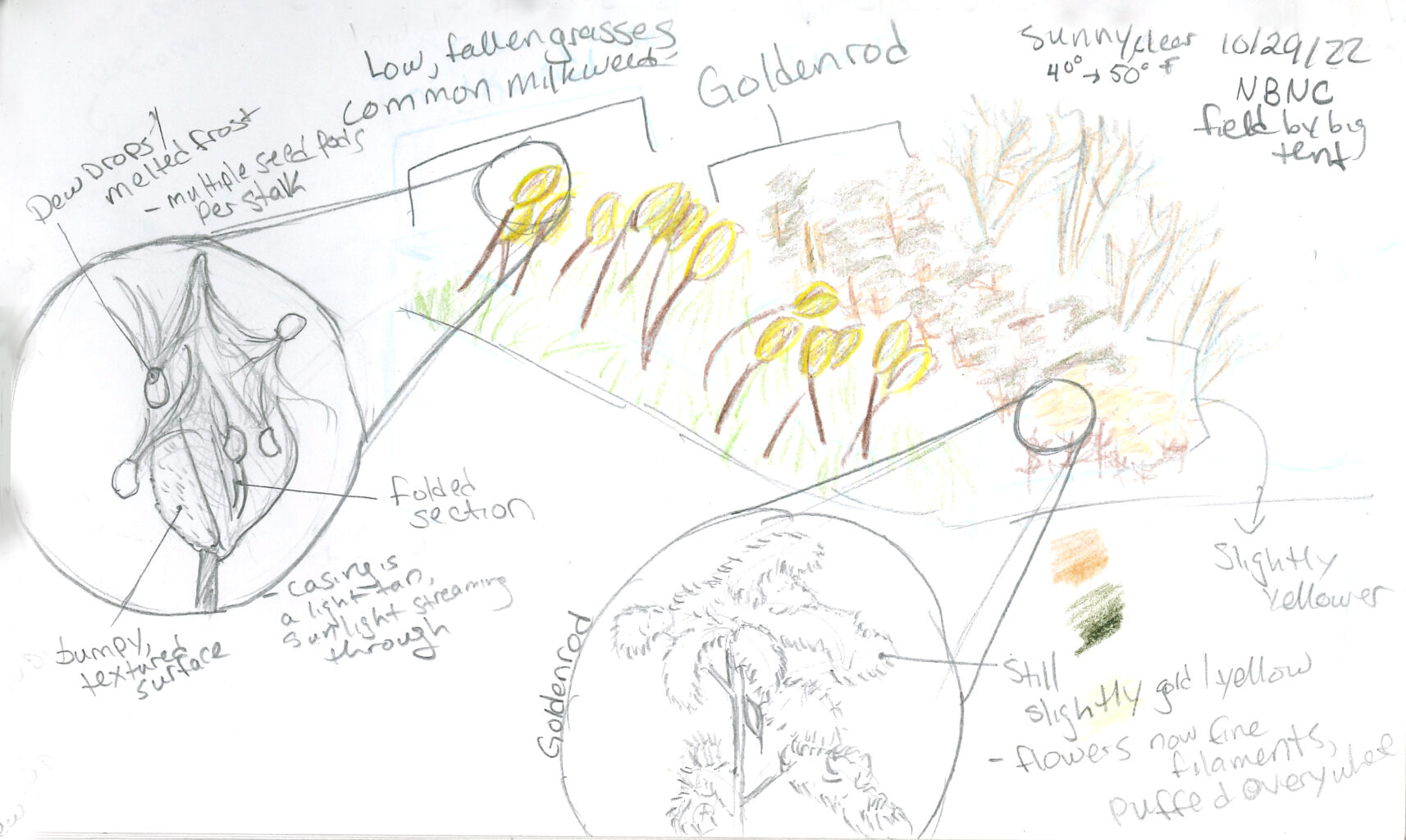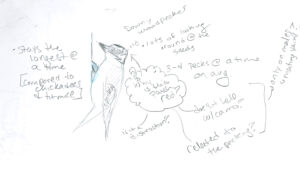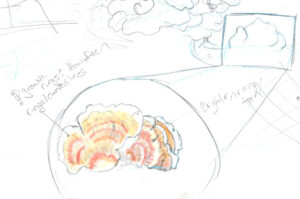Falling in Love with Nature Journaling

By Fiona Modrak, Teacher-Naturalist
A little over a year ago, when I first started at the Nature Center, one of my colleagues suggested we check out a video by an artist and naturalist named John Muir Laws. The video was an “Introduction to Nature Journaling.” With an image in my mind of someone sitting under a tree with a leather-bound notebook, writing poetic prose about the leaves and flowers (an activity of little interest to me), I approached the video with skepticism. But by the end of that video, I had decided to include this style of nature journaling into all aspects of my work with students.
What attracted me to Law’s style of nature journaling was the way it focuses on connecting to the natural world by giving nature your full attention. “Attention is the act of love,” Laws says in this introductory video, “…it changes profoundly your relationship with whatever you’re giving your attention to.” By using your journal to observe and give attention to nature, Laws says, you develop curiosity, improve artistic skills, and connect more deeply to the natural world.
But what does that actually look like? Laws’ approach to nature journaling uses techniques we employ in the field of environmental education all the time: focus on observations, ask questions, and make connections between things you know. Through prompts such as “I notice,” “I wonder,” and “It reminds me of,” a journalist can spend time with the natural world, taking in as many details as possible, making those connections, and coming up with questions.

This technique is also very adaptable. An artist himself, Laws encourages people to forget about making a “pretty picture,” as he says, and instead to focus on noticing things you might not have otherwise, and on making connections between them. This means you can and should use a variety of techniques in your nature journal. A proponent of the Growth Mindset, Laws encourages nature journalists to record observations using words, pictures, and numbers. Each technique pushes your brain to think differently and understand the world in different ways. And as you practice these techniques in your journal, you become better at them — and eventually you might find yourself making those pretty pictures after all.
But it doesn’t stop with just describing what you notice — Laws wants you to ask questions, think of explanations, and come back again and again to see whether those explanations might be right. If you think that sounds a lot like science, you understand why I was so excited to use this technique with students. A way to encourage kids to learn about the natural world through observation and questioning, while developing their connection to and love of nature. I cannot say it has been perfect, but the excitement I’ve seen from kids of all ages when they get to draw or write while exploring the world up close has made me excited to continue using nature journaling in my work with students.

Of course, it would be hypocritical to make my students take on nature journaling without trying it out myself, so within the last year I have begun to keep a journal of my own. I’ve found that I struggle with open-ended creative projects, so I turned to Laws again for some structure. Laws has many videos online, but the ones I’ve found the most helpful are his series “The Nature Journal Connection.” In these videos Laws provides prompts and various techniques for exploring with your nature journal, from using “I notice,” “I wonder,” and “It reminds me of;” to making a map; to looking at one thing from different perspectives; to making nature comics. If, like me, suggestions help you get started, these videos are an invaluable free resource.
The most wonderful thing that’s happened since I’ve started journaling really is that I’ve slowed down more. I’ve always liked to walk and hike, but now, when I hear a bird call, I stop and watch and listen. I notice more fungi and I stop to take a closer look. I spend more time just paying attention to the world around me. And like Laws says, I feel like I love it more.

